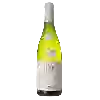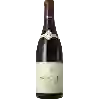
Winery MoingeonBrut 1415 Rosé
This wine generally goes well with poultry, appetizers and snacks or lean fish.
Food and wine pairings with Brut 1415 Rosé
Pairings that work perfectly with Brut 1415 Rosé
Original food and wine pairings with Brut 1415 Rosé
The Brut 1415 Rosé of Winery Moingeon matches generally quite well with dishes of shellfish, poultry or appetizers and snacks such as recipes of thai shrimp soup (tom yam goong), fried rice noodles with chicken or baked salmon steaks.
Details and technical informations about Winery Moingeon's Brut 1415 Rosé.
Discover the grape variety: Muscat de Hambourg
Muscat de Hambourg noir is a grape variety that originated in . It produces a variety of grapes used to make wine. However, it can also be found eating on our tables! This variety of grape is characterized by large bunches and large grapes. Muscat de Hambourg noir can be found in several vineyards: South-West, Cognac, Bordeaux, Languedoc & Roussillon, Provence & Corsica, Rhone Valley, Loire Valley, Savoie & Bugey, Beaujolais, Armagnac.
Informations about the Winery Moingeon
The Winery Moingeon is one of of the world's greatest estates. It offers 9 wines for sale in the of Crémant de Bourgogne to come and discover on site or to buy online.
The wine region of Crémant de Bourgogne
Recognized in 1975, the appellation crémant-de-bourgogne replaced the Sparkling wines whose quality was not very homogeneous. Its geographical area, very vast, covers more than 300 communes, of Châtillonnais, with the borders of Champagne auboise, with Beaujolais included. The AOC imposes conditions of harvest and elaboration as strict as those of the Champagne region and copied on this one, the difference residing in the duration of Maturation on lees, which is of nine months minimum, against twelve for the champagne. The Grape varieties used also bring Crémant-de-Bourgogne closer to its illustrious Champagne model, for although all the varieties of the region can be used, Pinot Noir and Chardonnay are favoured.
The wine region of Burgundy
Bourgogne is the catch-all regional appellation title of the Burgundy wine region in eastern France ("Bourgogne" is the French name for Burgundy). Burgundy has a Complex and comprehensive appellation system; counting Premier Cru and Grand Cru titles, the region has over 700 appellation titles for its wines. Thus, Burgundy wines often come from one Vineyard (or several separate vineyards) without an appellation title specific to the region, Village or even vineyard. A standard Burgundy wine may be made from grapes grown in one or more of Burgundy's 300 communes.
The word of the wine: Discharge
In the traditional method, elimination of the yeast deposit formed during the second fermentation in the bottle.














